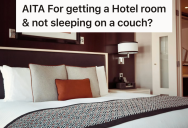When Should You Use A Semicolon? A Handy Guide To Proper Usage.
by Ethan Cotler
Meet the semicolon; it’s like the comma’s high-achieving cousin, and using it correctly can make you look quite clever.
In this post we’ll show you what a semicolon is, how you use it properly and when to avoid it.

What is a semicolon?
So, what is this elusive punctuation all about?
Think of a semicolon as a trusty pause indicator, with more weight than a comma but less finality than a period.
Despite some considering it an uppity relative in the punctuation family, its perceived arrogance comes mainly from misunderstanding its right usage.
It’s not so much confusing as it is misunderstood.
How does one wield this versatile tool?
Let’s delve into when to use a semicolon to seamlessly merge ideas, clarify listed items, and elegantly bridge sentences—a skill that could save you from potential grammar faux pas.
The quintessential manual for grammar enthusiasts, ‘The Elements of Style,’ penned by William Strunk and E.B White (initially published in 1919), brilliantly argues for the semicolon: “If two or more clauses, grammatically complete and not joined by a conjunction are to form a single compound sentence, the proper mark of punctuation is a semicolon.” In layman’s terms? It separates two independent yet related sentences sans any connecting words like ‘and’ or ‘but.’ For example: “She didn’t show up for work today; she said she had a headache.”

Who uses them?
Professional writers and copy editors swear by them! Benjamin Dreyer of Penguin Random House even calls punctuation “the breath” of writing.
Dreyer suggests that unless your sentences are brief, like “He came; he saw; he conquered,” independent sentences dangling on commas are a no-go. Instead, a semicolon serves as a stronger glue, binding two complete yet related sentences together without the finality of a period. Example: “She didn’t eat the banana; instead, she ate the apple.”
Wondering when to use this soft period, also known as a semicolon?
Think of it as softly nudging two independent thoughts closer than what they’d be if separated by periods. To quote yourdictionary.com, it “shows a closer relationship between the clauses than a period would show.”
For instance: “David was getting hungry; he suddenly regretted skipping breakfast.”
Semicolons can be used in lists.
If a list already contains commas and you want to add some extra information to each item in the list, you can use semicolons!
Example: I’ll be picking up ice cream, which I hope is low calorie; mangos, they’re in season and on sale; and coffee.
Semicolons serve like little fences, keeping each item distinct.

You can use them after transitional phrases.
For phrases like “however” or “as a result,” you can use semicolons to marry two sentences seamlessly.
Where not to use them?
Don’t bother using them when conjunctions like ‘but,’ ‘and,’ or ‘so’ are present – that’s where our good old friend comma comes in handy!
Now you’ve gotten acquainted with when to pull out your semicolon card.
Onwards to make your writing sound just a tad bit smarter!
Categories: STORIES
Tags: · grammer, punctuation, semicolon, single topic, spelling, top, words

Sign up to get our BEST stories of the week straight to your inbox.




